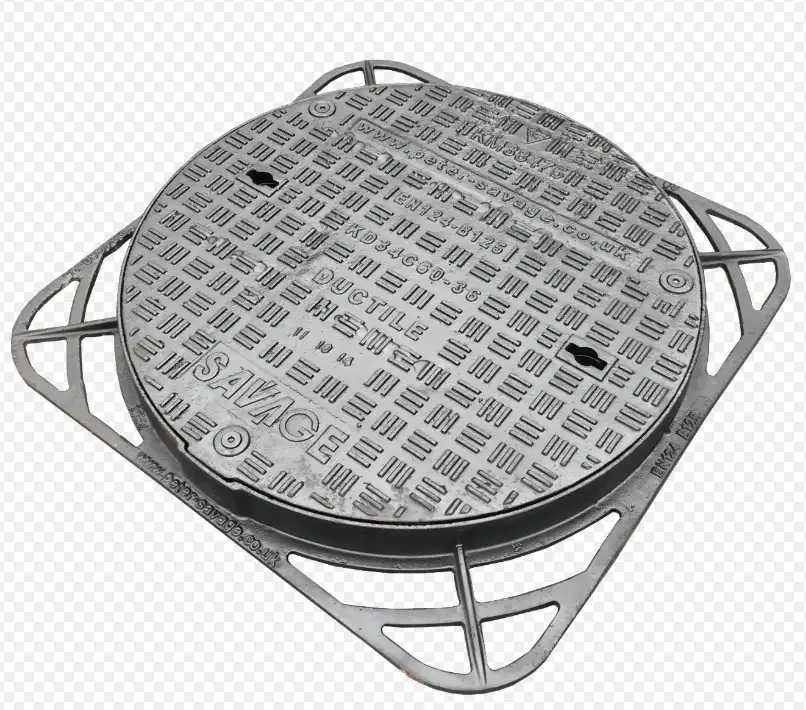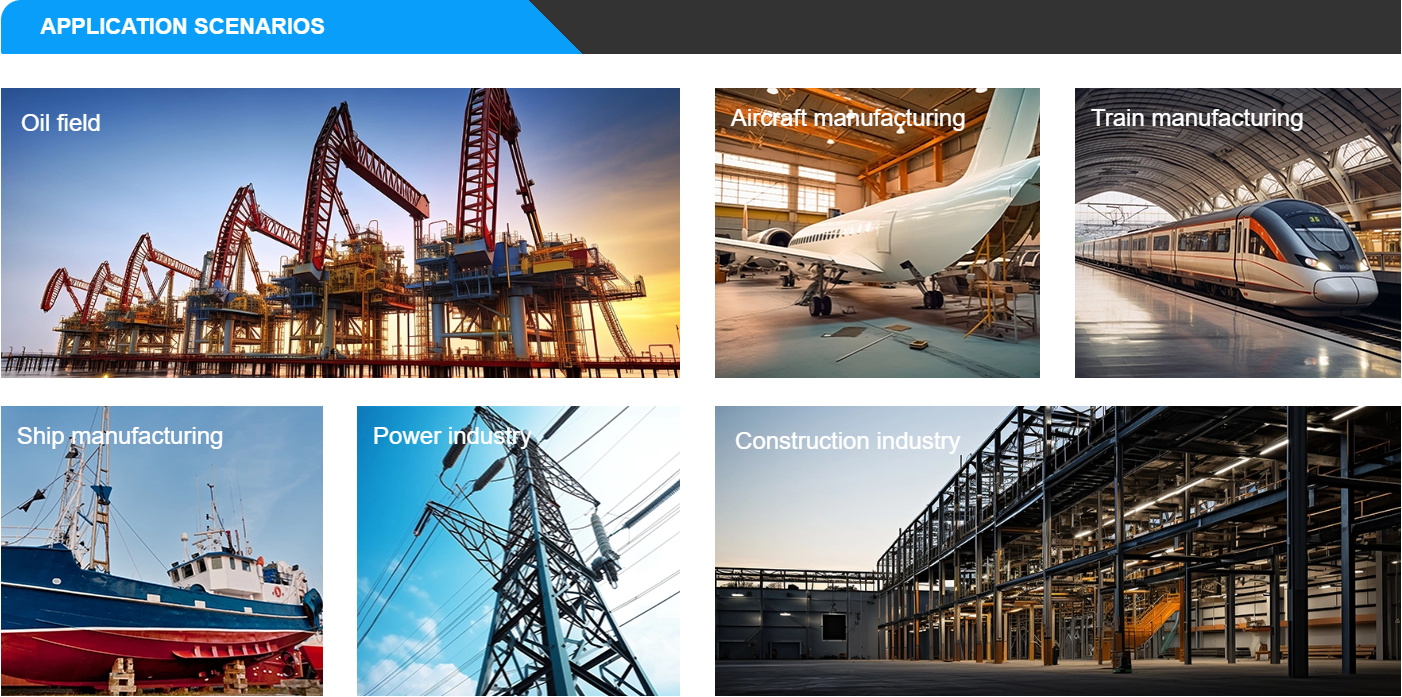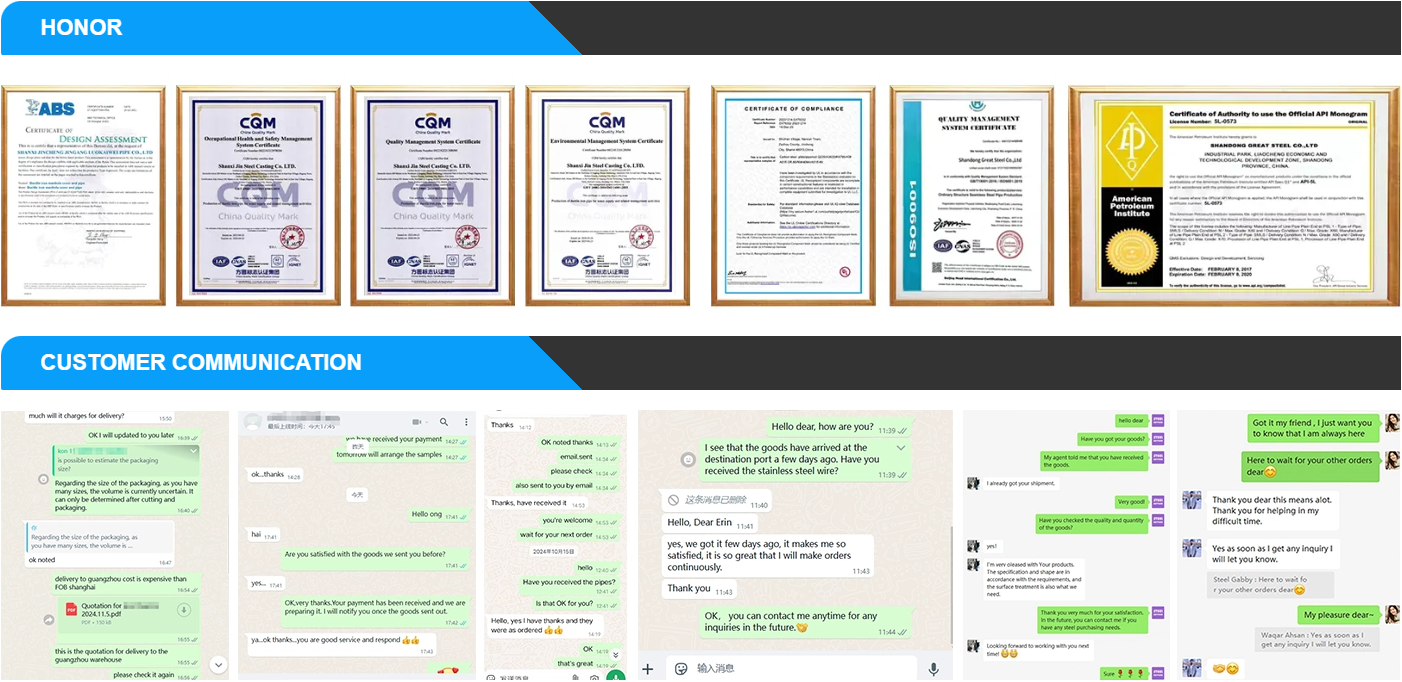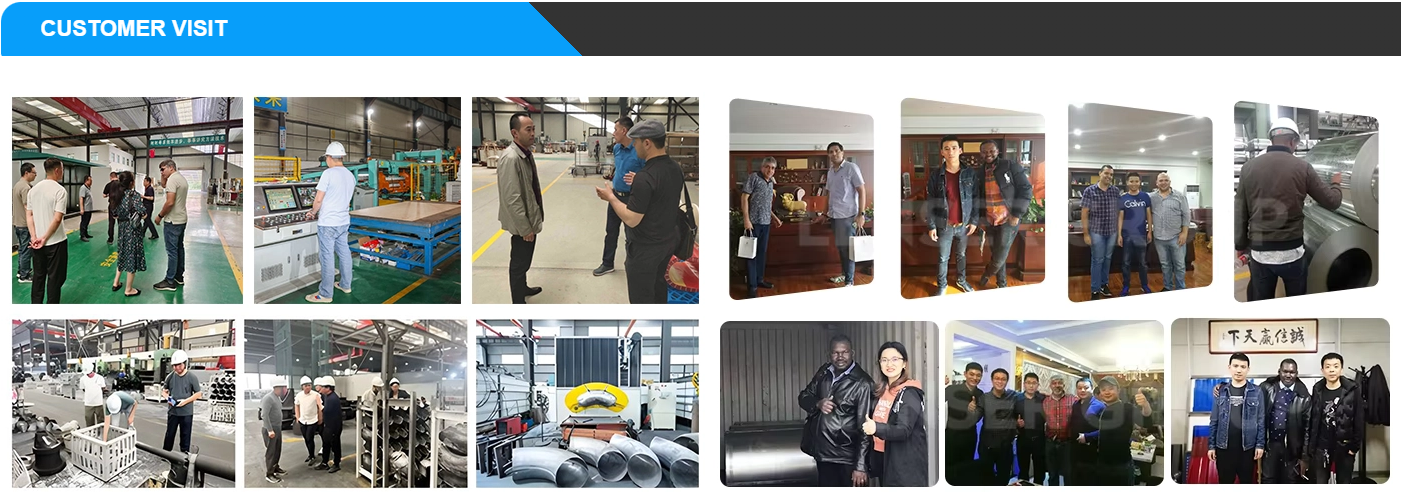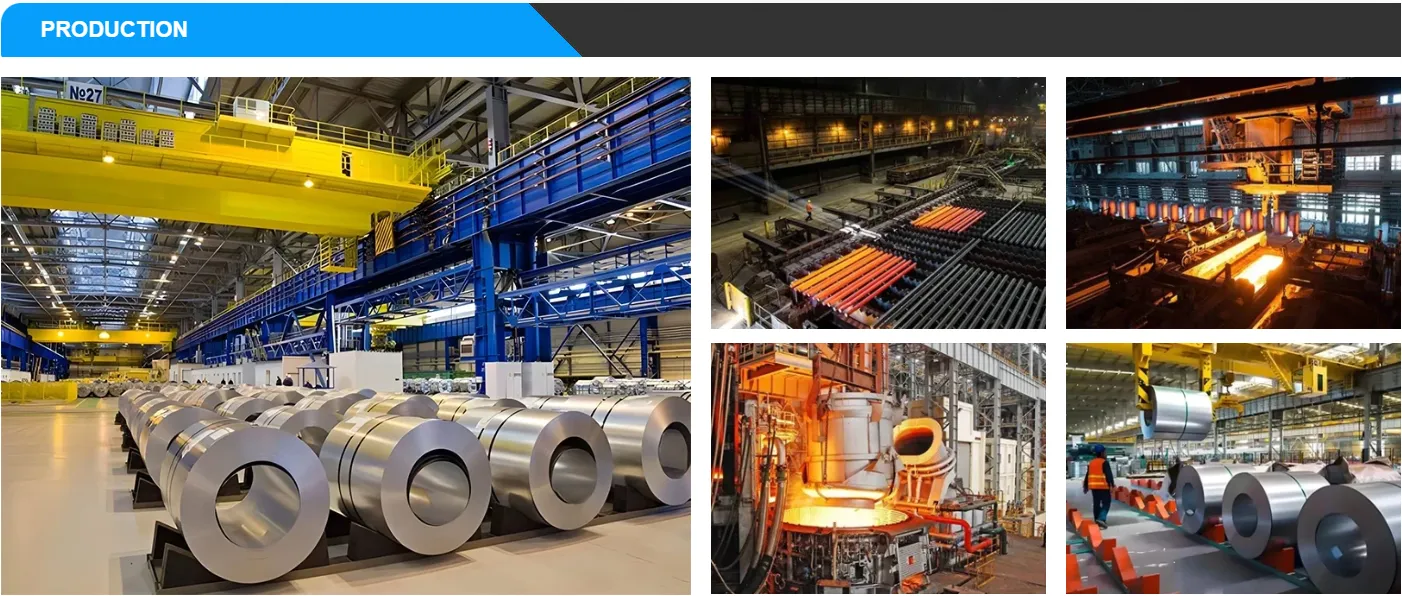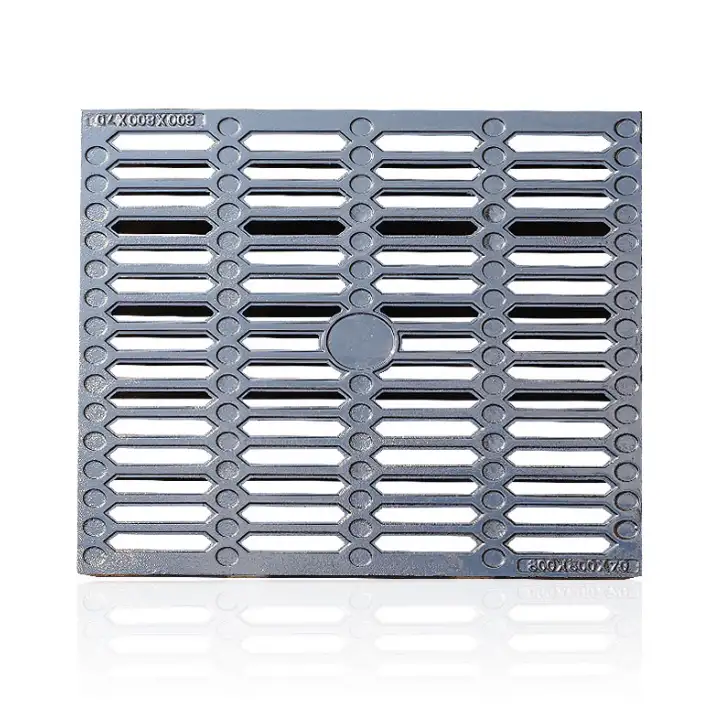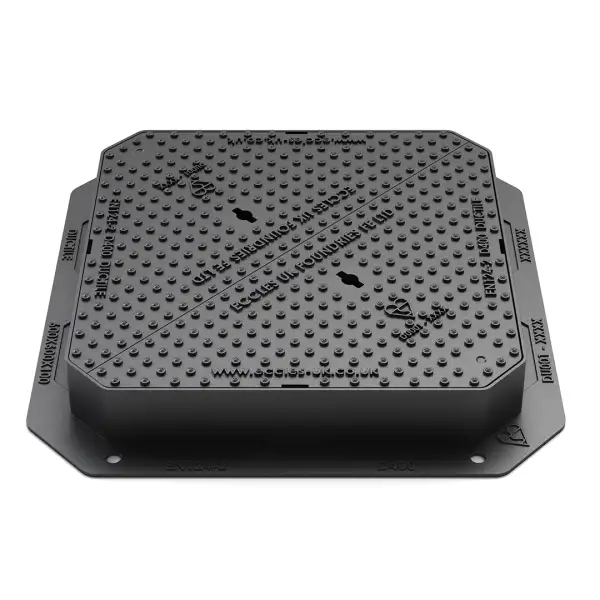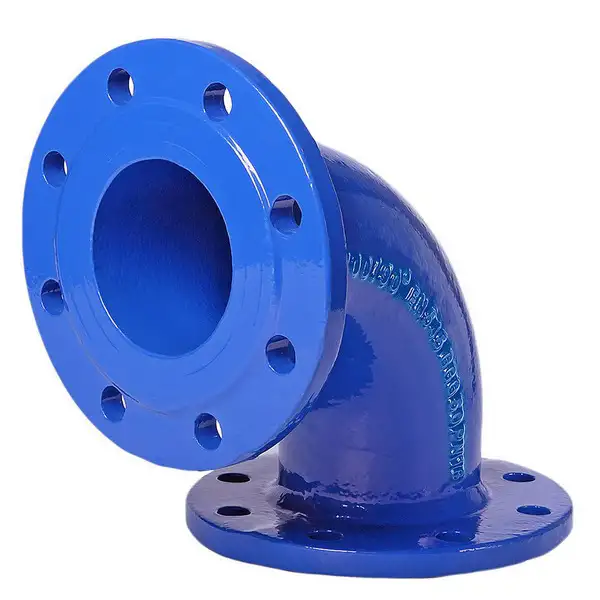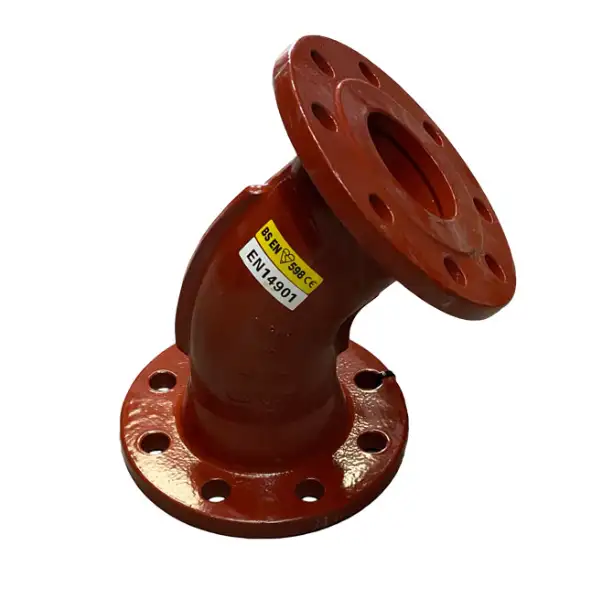Ductile iron covers and frames (manhole covers, inspection chamber covers, meter box lids, etc.) are critical infrastructure components in water, sewer, utility, and roadway systems. Manufactured to rigorous standards (EN 124, ASTM A48/A536, AASHTO, AWWA), they must balance strength, durability, safety, and ergonomics. This guide explores ten key categories: material specifications; standard load classes; cover & frame types (solid, vented, hinged, decorative); dimensional standards; manufacturing processes; installation best practices; testing & certification; surface finishes and anti-skid features; cost drivers & procurement; and maintenance & replacement strategies.
1. Material Specifications & Standards
Ductile iron covers and frames are cast from nodular graphite iron, conforming to ASTM A536 Grade 65-45-12 or ASTM A48 Class 35B, ensuring minimum tensile strength of 65 000 psi and yield of 45 000 psi. The spheroidal graphite microstructure provides superior toughness and fatigue resistance over grey iron, making it ideal for high-traffic installations.
International Standards
-
EN 124–2/3 (Europe) defines load classes A15 through F900, cover/frame materials, dimensions, marking, and testing protocols.
-
AASHTO M 306/M 306M (USA) covers precast manhole covers and frames for roadways, specifying load classes comparable to EN 124 but with U-stamped identifiers.
-
AWWA C 111/A21.11 and ASTM A48/A536 detail mechanical joint castings, often referenced for inspection-chamber components.
2. Load Classifications & Applications
Ductile iron covers/frames are rated by maximum wheel load. EN 124 load classes (kN) and typical applications:
| Load Class | Load (kN) | Typical Use |
|---|---|---|
| A15 | 15 | Pedestrian areas, parks, footpaths |
| B125 | 125 | Pedestrian + light vehicular (car parks) |
| C250 | 250 | Light traffic roads, kerbside verges |
| D400 | 400 | Carriageways, parking, hard shoulders |
| E600 | 600 | Industrial areas, docks, commercial yards |
| F900 | 900 | Airports, heavy-duty industrial facilities |
Table 1: EN 124 Load Classes & Typical Applications
In AASHTO, classes SYMBOL-stamped (e.g., H-20) correspond similarly to 20 000 lb (≈ 89 kN) wheel loads for highway manholes. Selection depends on traffic patterns, safety standards, and service requirements.
3. Cover & Frame Types
Ductile iron covers and frames come in a variety of configurations to suit different applications—from vehicular roadways to pedestrian pathways and utility access points. Each type balances load capacity, ease of access, security, and aesthetics.
3.1 Solid (Non-Vented) Covers
Solid covers provide a full surface area without openings or perforations, making them ideal for sewage, stormwater, and utilities where debris ingress must be minimized. They are cast with an anti-skid checker pattern on top to prevent slipping when wet.
3.2 Vented Covers
Vented covers incorporate small holes or slots (typically 10–30 mm diameter) to allow gas or vapour release from underground chambers—crucial for sewer and utility access points. Vents are designed to balance airflow with debris exclusion, and are often arranged in symmetrical patterns for structural integrity.
3.3 Hinged & Bolted Covers
Hinged covers are affixed to the frame with stainless-steel hinges and often a locking pin, preventing displacement during traffic and improving safety. Bolted covers use security screws or bolts around the perimeter to deter unauthorized access, commonly employed in high-security or utility-critical installations.
3.4 Decorative & Paver-Compatible Covers
For public realm projects and pedestrian zones, ductile iron covers can be manufactured with flush paver frames, allowing tiles or bricks to sit level with the surrounding surface. Decorative motifs (e.g., city crests, geometric patterns) are cast into the cover face to enhance aesthetics while maintaining load class ratings.
3.5 Shape Variations (Circular, Square, Rectangular)
-
Circular: Cannot fall through their opening and require no alignment when replacing the cover.
-
Square/Rectangular: Offer larger clear openings for equipment access but must be oriented correctly to avoid rotation.
-
Custom Shapes: Some projects demand bespoke polygonal or freeform shapes, cast per private standards where EN 124 does not prescribe dimensions.
3.6 Load-Class Versatility
Many cover types above are available across multiple EN 124 load classes (B125–F900), ensuring that a single design (e.g., checker pattern) can be specified for pedestrian, light-vehicular, or heavy-duty zones without changing the basic casting pattern.
4. Dimensional Standards & Comparison Tables
All ductile iron covers and frames intended for vehicular or pedestrian traffic are standardized under BS EN 124-2/3:2015, which defines dimensions for clear opening, frame outer dimensions, and total assembly depths across load classes.
4.1 EN 124 Dimensional Parameters
| Parameter | Symbol | Definition |
|---|---|---|
| Clear Opening | A×B | Internal span through which equipment/personnel pass |
| Frame Outer | C×D | External dimension footprint in the pavement |
| Total Depth | E | Combined thickness of frame + cover |
Table 4.1: EN 124 Dimensional Symbols
4.2 Example Dimensions for Common Clear Openings
Below are typical dimensions for 600 × 600 mm and 800 × 600 mm rectangular covers in Class D400 (40 t), comparing two manufacturers’ data:
| Clear Opening (A×B) | Over Frame (C×D) Manufacturer X (mm) | C×D Manufacturer Y (mm) | Total Depth (E) X/Y (mm) |
|---|---|---|---|
| 600 × 600 | 735 × 735 | 755 × 605 | 75 / 100 |
| 800 × 600 | 920 × 720 | 900 × 775 | 100 / 100 |
Table 4.2: Rectangular Cover Dimensions Comparison
4.3 Circular Cover Dimensions
| Clear Opening Ø (mm) | Frame Ø (mm) Manufacturer X | Frame Ø (mm) Manufacturer Y | Total Depth (E) (mm) |
|---|---|---|---|
| Ø 600 | Ø 750 | Ø 750 | 100 |
| Ø 900 | Ø 1060 | Ø 1050 | 100 |
Table 4.3: Circular Cover Dimensions
4.4 Weight Comparison by Type & Class
| Type / Load Class | Unit Weight (kg) Manufacturer X | Manufacturer Y (kg) |
|---|---|---|
| 600 × 600 B125 | 40 | 45 |
| 600 × 600 D400 | 70 | 75 |
| Ø 600 B125 | 35 | 38 |
| Ø 600 D400 | 65 | 70 |
Table 4.4: Cover & Frame Weights
These standardized dimensions ensure interchangeability and compliance with safety regulations across regions and suppliers.
5. Manufacturing Processes & Quality Control
Ductile iron covers and frames are typically produced via sand casting using silica-based molds and cores, where molten ductile iron is poured into metal or resin patterns to form the desired shapes. After solidification, the castings undergo fettling, where excess sand and parting lines are removed by shot blasting and grinding. Critical surfaces, such as seating faces and anti-skid patterns, are then finish-machined to tight tolerances (±0.5 mm) to ensure proper seating and load distribution.
Next, castings are heat treated—typically annealed at 900–950 °C for 2–4 hours—to spheroidize graphite nodules and relieve internal stresses, thereby achieving ASTM A536 mechanical properties (65 000 psi tensile, 12 % elongation). Quality control includes dimensional inspection via coordinate measuring machines (CMMs) to verify clear opening, frame dimensions, and overall depth per EN 124-2/3. Material integrity is assessed by magnetic particle or ultrasonic testing to detect surface and subsurface defects, ensuring no cracks or porosity compromise performance. Each casting must pass a load test—applying the rated wheel load plus 25 % safety factor—to certify compliance before shipment.
6. Installation Best Practices
Proper installation of ductile iron covers and frames is essential for safety, durability, and performance. First, the masonry or concrete bedding must be prepared to the correct level and width, ensuring the frame sits flush without rocking or gaps. Bedding materials typically include class A cement mortar or high-strength, non-shrink grouts to provide uniform support and prevent frame displacement under load.
Before setting the frame, verify that the clear opening aligns with underground structures and that lifting keys or bolt holes match the cover design. The frame is then lowered carefully into place, and mortar is applied around the outside (for roadways) or inside (for pedestrian areas) to seal against water ingress and soil migration. After mortar sets (typically 24 hours at ≥10 °C), backfill is reinstated in layers, compacting each lift to avoid settlement that could misalign the cover. Finally, covers should be checked for smooth operation, proper seating, and flushness with the surrounding surface, with any necessary adjustments made immediately.
7. Testing, Certification & Safety Features
Ductile iron covers must pass rigorous EN 124:2015 Part 1 tests, including static load, fatigue cycling (100 000 cycles at working load), and impact resistance (hammer test), conducted by accredited bodies such as BSI or TÜV. Certification to EN 124 yields CE marking and often a BSI Kitemark, signifying continual production audits and retesting to maintain quality.
In the United States, AASHTO M 306 certification parallels EN 124, requiring hydraulic depth tests (hydrostatic under 1.5× rated load) and slip resistance evaluation per ASTM E 303 (British Pendulum Test) for anti-skid covers. Safety features such as bolt-down or hinged mechanisms prevent cover displacement under traffic or vandalism, and venting conforms to AASHTO M 306 Section 11 for sewer gas relief without compromising load integrity. Each certified cover/frame assembly bears clear load class markings (e.g., D400, H-20) and manufacturer identifiers for traceability.
8. Surface Finishes & Anti-Skid Designs
To ensure pedestrian and vehicle safety, ductile iron covers are cast with anti-skid patterns such as checker, cross-hatch, or raised studs, designed to exceed a British Pendulum Number (BPN) of 45 for Class D400 and above. Advanced finishes include Polymer-based non-slip coatings (e.g., SLIPNOT’s proprietary formula) applied post-casting to achieve BPN > 60, particularly in high-precipitation or chemical-exposed areas.
Additionally, surface treatments like powder coating or epoxy paint enhance corrosion resistance and aesthetic appeal. Popular color options (gray, black, green) facilitate utility identification and urban design integration. Decorative covers often feature raised relief artwork sealed with UV-stable clear coats to maintain crisp visuals over years of service.
9. Cost Factors & Procurement Strategies
The unit cost of a standard ductile iron cover and frame assembly ranges from $150 to $800, depending on load class, size, and special features such as venting or locking mechanisms. Key cost drivers include:
| Factor | Impact on Price |
|---|---|
| Load Class | Higher classes (D400, F900) use more material and rugged designs, adding 20–50 % cost |
| Size & Shape | Custom sizes (e.g., 1000×1000 mm) can increase tooling and mold costs by 30 % |
| Locking/Security | Hinged or bolted designs add stainless steel hardware ($20–$50 per cover) |
| Surface Finish | Powder coatings or decorative reliefs add $10–$30 per cover |
| Certification | BSI Kitemark or AASHTO approval may incur testing fees ($100–$200 per SKU) |
Bulk procurement (≥100 pcs) often yields 10–15 % volume discounts, and long-term supplier agreements can lock in pricing against raw material fluctuations in scrap steel markets.
10. Maintenance, Inspection & Replacement
Regular maintenance ensures cover integrity and safety. Annual visual inspections should check for rust, cracks, and seat alignment; anything beyond superficial corrosion (pitting >1 mm depth) warrants part replacement. Lubrication of hinges and locking mechanisms with corrosion-inhibiting grease prolongs service life and prevents seizure.
Full non-destructive testing (NDT), such as ultrasonic thickness gauging and magnetic particle testing, is recommended every 5–7 years for high-traffic areas to detect subsurface defects before failure. Replacement criteria include load class upgrades, seat deterioration, and safety standard changes; typical service life is 20–30 years in moderate climates but can reduce to 10 years in aggressive, de-icing-salt environments without protective coatings.
Six Detailed FAQs
1. How do I select the appropriate load class for my application?
Selection hinges on anticipated traffic loads and safety factors. EN 124 classes range from A15 (pedestrians only) to F900 (airports, heavy industry). For urban streets with mixed traffic, Class D400 (40 t) is standard, but weigh-in-motion studies and AASHTO H-20 equivalents should guide decisions. Consider future traffic growth and safety margins; a 25 % buffer above maximum expected load is prudent. Always verify local regulations and utility authority requirements before specification.
2. What are the benefits and drawbacks of vented vs. solid covers?
Vented covers allow sewer and utility gases to escape, reducing internal pressure buildup and odours, but they can admit debris and water, requiring integrated screens and seals. Solid covers prevent ingress but may trap gases, demanding ducting or separate ventilation shafts—adding cost and complexity. Choose vented designs for applications with known gas generation (sewers, pump stations) and solid covers where contamination control is paramount (stormwater, telecommunication vaults).
3. How often should manhole covers be inspected and maintained?
A minimum annual inspection is recommended for pedestrian areas, checking for loose seats, corrosion, and surface wear. High-traffic or corrosive environments merit biannual inspections with NDT methods every 5–7 years. Lubricate hinges and locks annually, and remove road salt or chemical deposits after winter to prevent accelerated corrosion. Document all inspections and repairs in a maintenance log to track component life cycles.
4. What anti-skid options are available and how effective are they?
Anti-skid patterns cast into the cover (checker, cross-hatch) must achieve a BPN ≥ 45 per ASTM E 303; polymer-based coatings (SLIPNOT) provide BPN ≥ 60 for high-risk areas. GripTop covers use specialized raised studs for D400/E600 classes, offering enhanced traction under water or oil contamination. Select finishes based on site-specific hazards: pedestrian zones need less aggressive patterns than industrial sites subject to greases or chemicals.
5. How do installation mistakes impact long-term performance?
Common errors include improper bedding—insufficient mortar causes rocking under load, leading to frame distortion and seat wear. Over-tight backfill compaction can misalign the frame, preventing cover seating and water ingress. Skipping manufacturer-recommended curing times weakens mortar, inviting settlement. Adhering to the definitive checklist—site prep, level bedding, proper mortar mix, and correct backfill compaction—mitigates these failures.
6. What factors influence the total cost of ownership for covers and frames?
Beyond unit price, consider life-cycle costs: replacement frequency, maintenance labor, traffic disruptions, and safety incidents. Coated covers may cost 15 % more initially but last 2–3× longer in corrosive environments, reducing total cost by up to 30 %. Volume purchases, standardized designs, and maintenance contracts with guaranteed response times can further optimize budgets.

